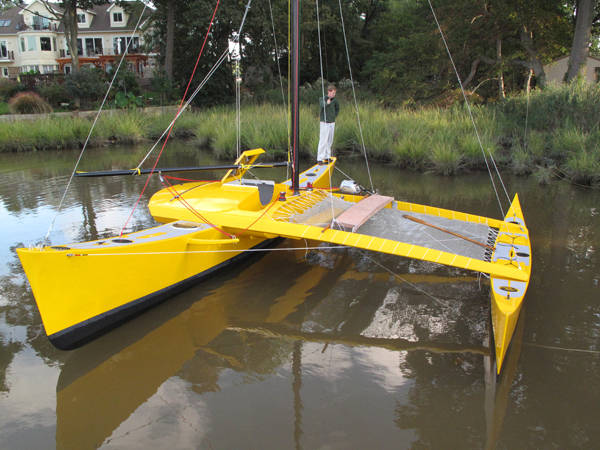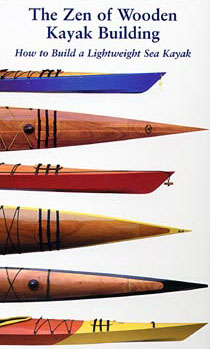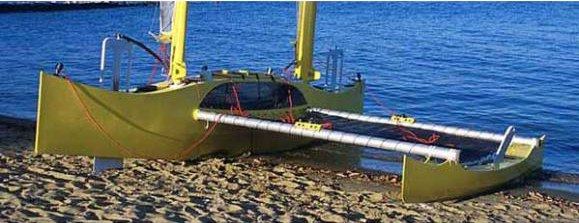

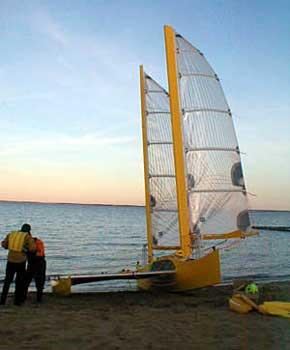
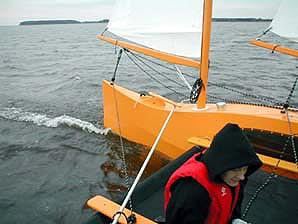
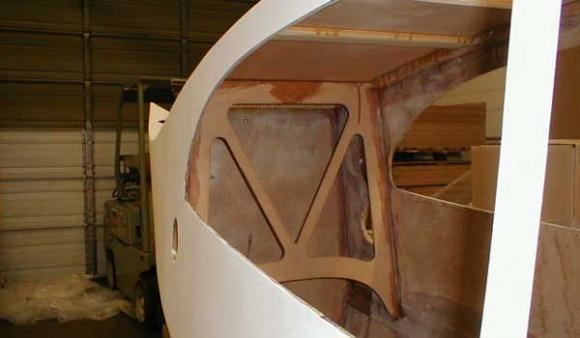
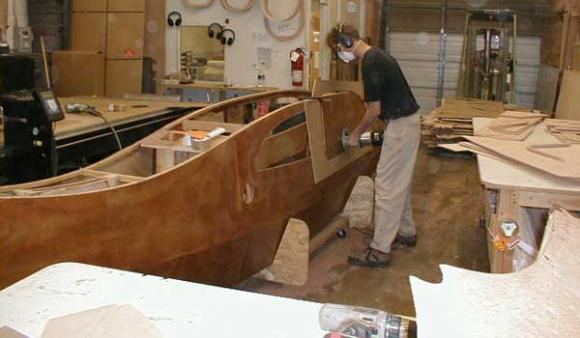






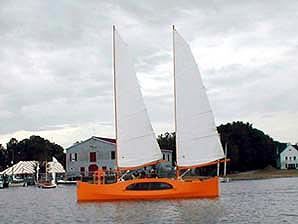
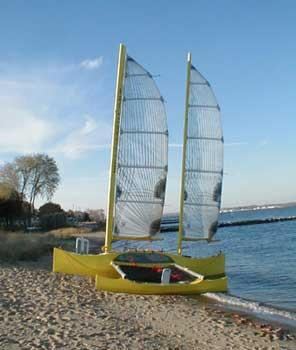
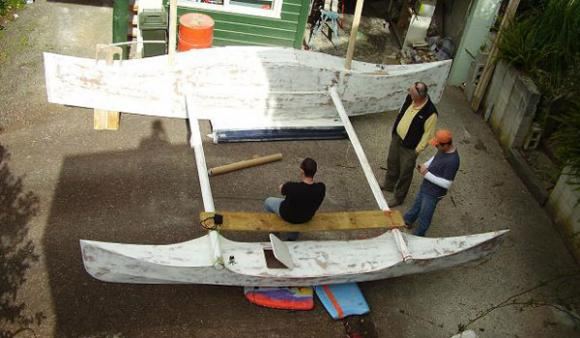
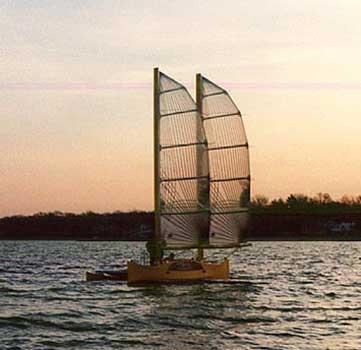

Product Description
Plans for an ultra-light and very fast Pacific proa beach cruiser.
MBULI has the makings of a fast and challenging beach cruiser. The designer-builder admits to liking the boat's shape and personality. So do I.
Mike O'Brien, WoodenBoat Magazine, December 2002.
Mbuli (pronounced em-BOO-lee) is a Pacific proa designed and built by John Harris in 1999 and 2000. The original design brief called for a lightweight beach cruiser, easy to build, and capable of carrying a solo cruiser around sheltered waters at faster-than-average speeds. As such, it was a successful design, much admired and coveted. After so many requests for plans, we have made them available here.
A Pacific proa is a type of sailing canoe in wide use in the South Pacific for thousands of years. Mbuli is obviously a modernised proa but the principle is the same: there is a big hull, which holds the rig and accommodation and a small hull to windward for stability. The crew operates the proa from the trampoline stretched between the two hulls.
The outrigger, or ‘ama’, is meant to be kept to windward at all times. Sailors will immediately recognise that this results in some curious handling; to tack, Mbuli must in effect perform a three-point turn. This manoeuvre is known as ‘shunting’, and if you've had some sailing experience you'll find it not only easy to do but a fast way to change direction. Tacking Mbuli such that the ama is alternately to windward and then to leeward isn't possible except in an emergency.
The need to shunt instead of tack in the traditional manner is one of the Pacific proa's idiosyncrasies, but there's a reason for it: proas can have larger rigs than other multi-hulls of equivalent length, but they can be 30% lighter. All this translates into a lot of speed in a small, lightweight package. The all-up weight using Okoume plywood is around 450 lb, with that much again available for crew and cargo.
The unstayed schooner rig was chosen for easy handling. The prototype's wing masts permit awesome speeds, but they were tricky and expensive to build and require a highly skilled and athletic crew. The hollow, tapered masts shown in the drawings will offer exhilarating speeds without compromising Mbuli's beachcruising style and were used on a second boat built from the plans.
Mbuli has a small watertight cabin or enclosure measuring 8′ × 2′. This compartment is kept closed under sail, but at anchor or on the beach it makes a nice sleeping space for one adult. The big windows ensure that you don't get claustrophobic. Many builders will elect to sleep on the 8′ × 10′ trampoline. You could even erect a traditional tent on the trampoline. The bow and stern are watertight compartments and are available for storage. Additional storage for anchor and line are provided in the ama.
The crossbeams, or ‘akas’, are 4 inch aluminium tubes. Mbuli can be broken down for trailering in less than an hour.
Construction is of 6 mm okoume plywood covered with epoxy and glass fabric. Builders with a little boatbuilding experience will find it a straightforward project. The lifting rudder-daggerboards and the hollow masts are the most challenging part to tackle.
Mbuli is meant for sheltered waters on the sea or lakes and isn't ideal for first-time sailors. However, skilled sailors with some multihull experience will be rewarded with remarkable performance upwind and down, speeds in excess of 15 knots, and a fun platform for beach cruising.

Plans
These plans include seven sheets with detailed construction drawings. Offsets are provided for all of the plywood parts, with dimensions for bulkheads and other components and details for both schooner rigs.
PDF plans and manual
This option is to download the complete plans for building the Mbuli Proa in PDF format. You will need access to a printer/plotter capable of printing a ARCH-D size sheets (36″ × 24″ or 914 × 609 mm) in order to build the boat using these plans.
After credit card authorisation a download link will be sent to the email address put on the order form.
PDF study plans
These study plans are intended to give you an overview of the construction of the boat. They are in PDF format that can be viewed using Adobe Reader. There are two pages and they measure 279 × 216 mm (11″ × 8½″). They can be printed for carrying around.
After credit card authorisation the plans will be sent to the email address put on the order form.


